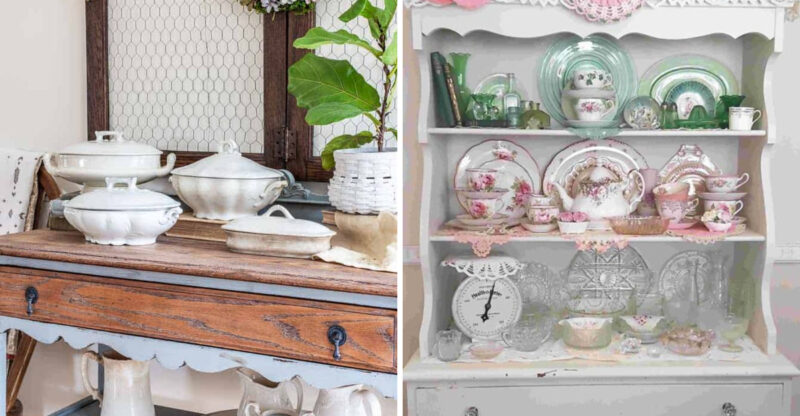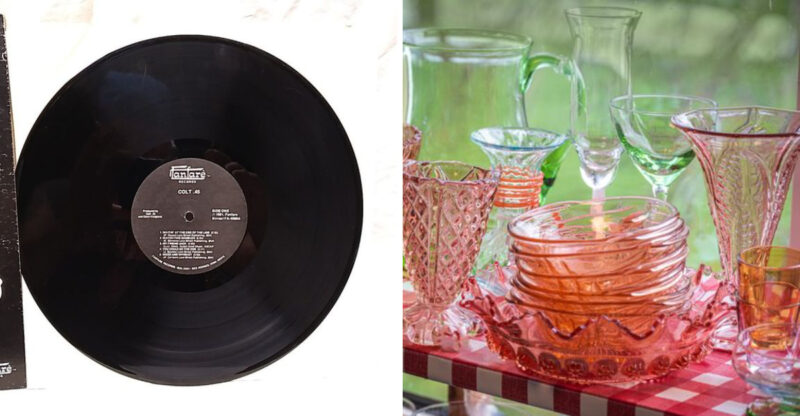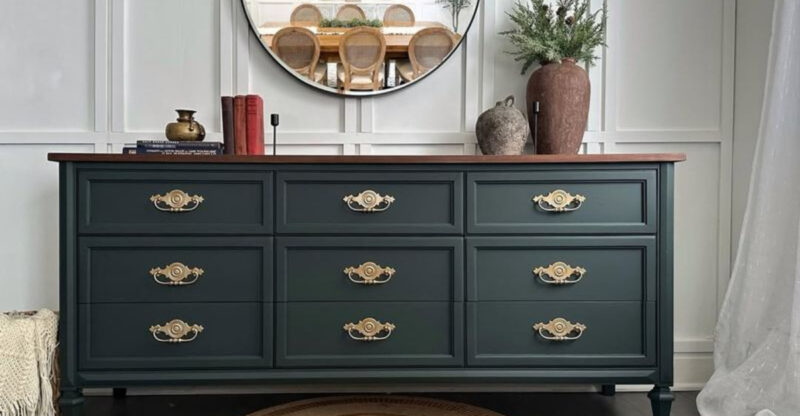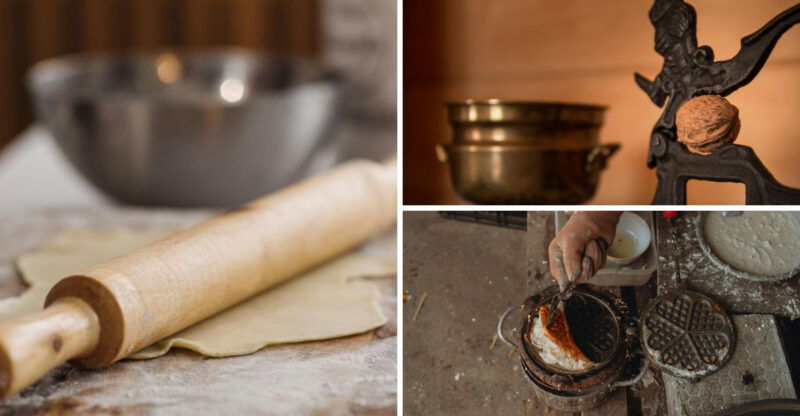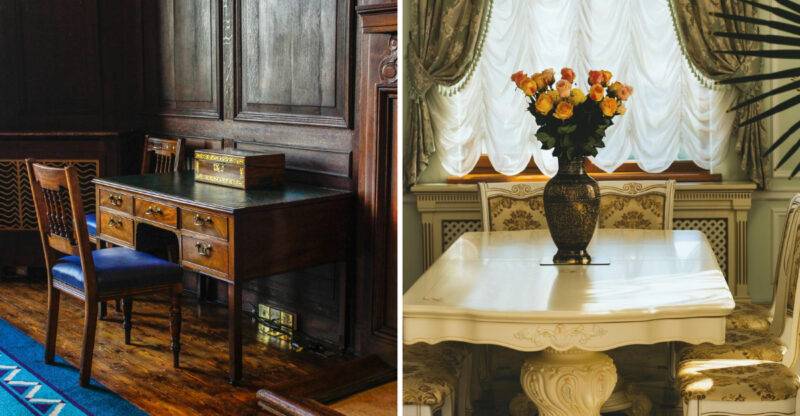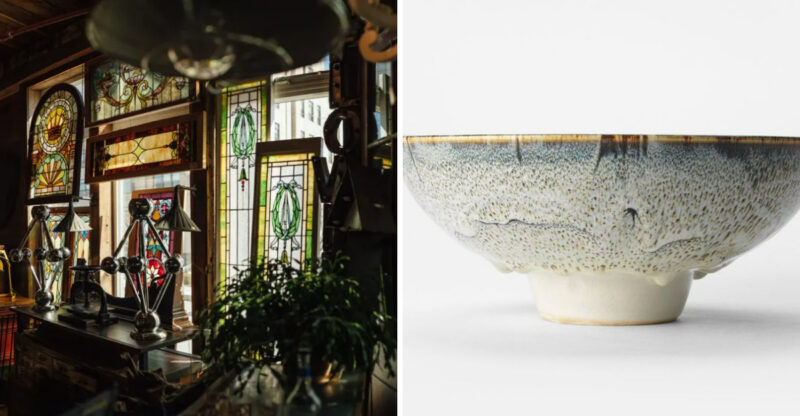Farmhouse Antiques Likely To Grow In Worth
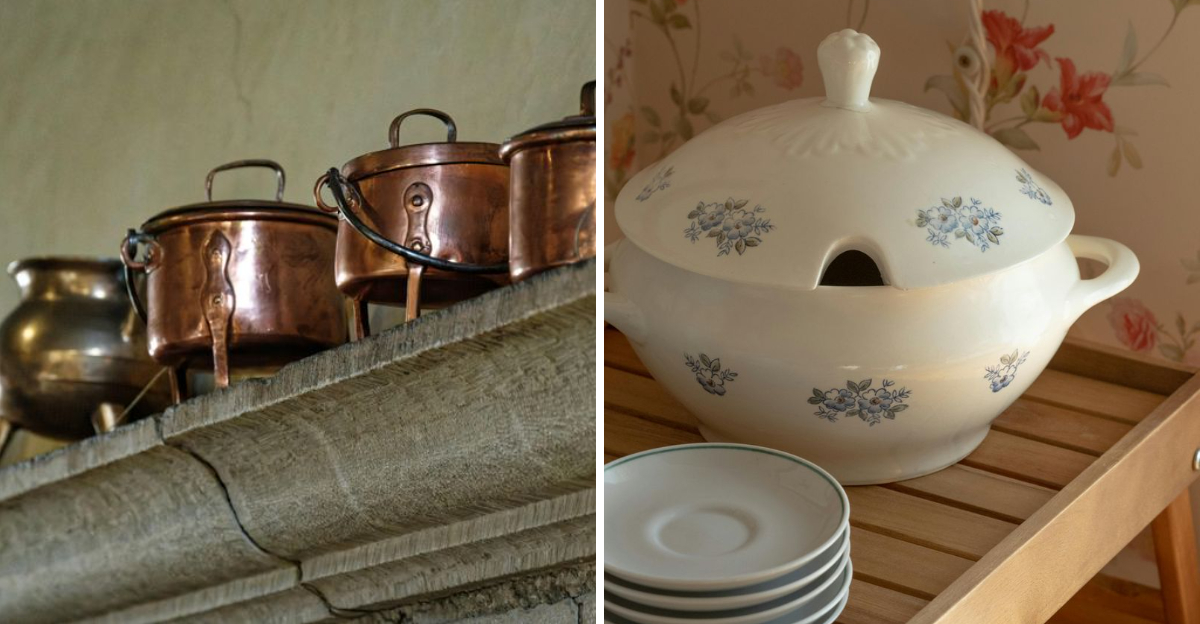
Old farmhouse treasures are making a big comeback in today’s home design world. As modern homes embrace rustic charm, authentic pieces from America’s agricultural past are becoming hot commodities.
Whether you inherited grandma’s kitchen items or love hunting at country auctions, knowing which farmhouse antiques might increase in value can help you make smart collecting decisions.
The value of antiques can vary based on market trends, condition, and provenance. Always consult a professional appraiser before buying or selling collectible items.
1. Primitive Armoires And Cabinets
Ever notice how those massive wooden cabinets command attention in any room? Primitive armoires with their hand-carved details and weathered finishes tell stories of craftsmanship from centuries past.
These storage giants weren’t mass-produced like today’s furniture. Each piece bears unique tool marks, joinery techniques, and wood aging patterns that authenticate its history.
Collectors particularly value examples with original hardware and paint. Look for cabinets made before 1850 with dovetail joints and square nails, they’re becoming increasingly rare as wealthy homeowners compete for statement pieces with genuine patina.
2. Antique Tapestries
Hanging on farmhouse walls for centuries, these woven treasures protected against drafts while adding color to otherwise plain interiors. Antique tapestries depicting pastoral scenes or farm life connect directly to agricultural heritage.
The craftsmanship involved in creating these textiles required extraordinary patience and skill. Weavers often spent years completing a single large piece, using natural dyes and techniques now largely forgotten.
Hunt for examples showing minimal restoration and clear provenance. European tapestries from the 18th and 19th centuries featuring farm scenes or botanical motifs are particularly gaining interest among serious collectors.
3. Oil On Canvas Portraits
Who wouldn’t be fascinated by those stern-faced ancestors staring from ornate frames? Folk art portraits from American farmhouses offer windows into rural life before photography existed.
These paintings weren’t created by famous artists but by itinerant painters who traveled from farm to farm offering their services. The charming awkwardness and flat perspective make them instantly recognizable as authentic American primitives.
Portraits showing farmers with their prized livestock or women with symbolic objects like books or flowers carry special significance. The market for these personal historical documents continues climbing as museums and collectors compete for quality examples.
4. Farm Tables
Though they served purely practical purposes originally, these magnificent wooden workhorses now command premium prices in upscale home stores. Authentic farm tables show evidence of actual use, knife marks, burn spots, and uneven wear patterns.
The most valuable examples feature single planks of old-growth timber that would be impossible to source today. Tables made from oak, maple, or cherry with hand-turned legs and mortise-and-tenon joinery represent superior craftsmanship.
Many collectors prefer tables with original surface patina rather than refinished examples. Those exceeding eight feet in length (built for large farm families) are especially prized for modern entertaining spaces.
5. Soup Tureens
If you’ve overlooked these covered serving vessels, you’re missing out on rapidly appreciating farmhouse treasures! Soup tureens symbolized hospitality and abundance in rural homes where hearty soups sustained hardworking families.
The most collectible examples come from European pottery centers and feature hand-painted decorations or transfer-printed patterns. Ironstone tureens in classic white or blue and white colorways remain perennial favorites among designers and collectors.
Complete sets with matching ladles and underplates command significantly higher prices. Those bearing marks from renowned makers like Spode, Wedgwood, or early American potteries continue climbing in value as formal dining traditions experience renewed interest.
6. Antique Butter Churns
Antique butter churns bring the simplicity of rural life into modern homes. These nostalgic pieces, often crafted from wood, remind us of a time when butter-making was a daily ritual. The charm lies in their functionality and the craftsmanship that has allowed them to withstand the test of time.
Collecting these churns can be both a visual delight and a historical journey. Each churn tells a story, from the way it was used to the hands that cranked it tirelessly. As more people seek to reconnect with traditional ways, butter churns are becoming increasingly sought after in the antique market.
Did you know? Some of these churns date back to the 19th century and can fetch a high price at auctions, making them a worthwhile investment for collectors.
7. Ironstone Dishware
How wonderful that these practical dishes created for hardworking farm families now grace the most stylish dining tables! Ironstone’s durability made it perfect for daily use in rural homes where delicate china would quickly shatter.
The clean white surfaces of traditional ironstone provide perfect backdrops for today’s farm-to-table cuisine. Collectors especially value serving pieces like platters, tureens, and pitchers with creamier coloration, indicating earlier production.
Watch for pieces bearing English maker’s marks like Johnson Brothers, Meakin, or Wood & Sons. American-made examples from potteries like Knowles, Taylor & Knowles command premium prices, especially when found in unusual forms or with minimal crazing.
8. Vintage Lighting Fixtures
When electricity first reached rural America, farmhouses adapted with fascinating transitional lighting solutions. Original fixtures that bridged oil lamp technology with electric capabilities now attract serious collector interest.
Hanging fixtures with milk glass shades, converted oil lamps, and early industrial-style pendants capture the farmhouse aesthetic perfectly. The most valuable examples retain original wiring components (though these should be professionally updated for safety before use).
Metal fixtures showing honest patina from decades of use bring authenticity that reproductions can’t match. Those with adjustable components or unusual mechanical features particularly appeal to collectors looking for functional sculpture with historical significance.
9. Handmade Quilts
Beyond merely warming beds, these textile treasures documented family histories and community connections through fabric and thread. Antique quilts featuring unusual patterns, exceptional workmanship, or documented provenance continue to gain appreciation.
The most valuable examples date from 1840-1870 and showcase intricate hand quilting with tiny, even stitches. Collectors prize quilts with signatures, dates, or regional motifs that connect them to specific communities or historical events.
Unusual color combinations or rare patterns like “Bride’s Quilt” or “Album Quilt” command premium prices. Those with documented connections to notable families or historical events represent not just craftsmanship but important American social history worth preserving.
10. Copper Cookware
Nothing captures the working heart of historical farmhouses better than gleaming copper pots hanging from kitchen beams. These practical cooking vessels conducted heat perfectly long before modern cookware existed.
The warm glow of hand-hammered copper brings incomparable warmth to contemporary kitchens. Serious collectors seek pieces bearing maker’s marks from renowned European manufacturers like Dehillerin or Mauviel.
Early American examples with dovetailed seams or hand-forged iron handles command the highest prices. Copper items with unusual forms or specialized purposes (like candy-making kettles or fish poachers) attract particular interest from collectors who appreciate both their beauty and historical cooking function.

